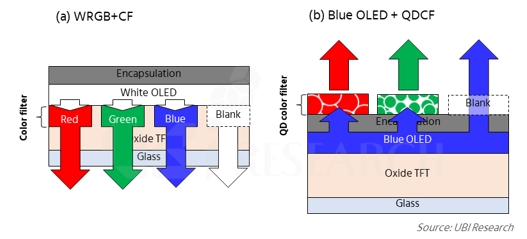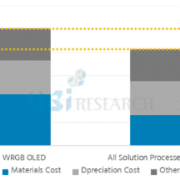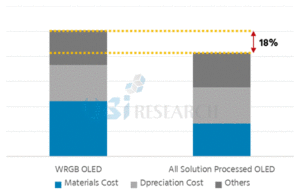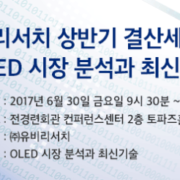Can BLUE OLED be used for OLED TV?
Samsung Display selected blue OLED + QDCF (blue OLED) as next generation display technology following LCD TV, and started the necessary development.
Blue OLED is a technology, in which blue light emitted from blue OLED passes through a quantum dot color filter to represent red and green colors (b). The WRGB OLED used in OLED TV is a method in which white light passes through a color filter and implements RGB colors (a).

The ‘2018 OLED Materials Industry Report’ published by UBI Research on April 18 describes whether blue OLED, which Samsung Display has started to develop, can become TV OLED panels. The expected development direction and performance (efficiency and lifetime) of blue OLED + QDCF are analyzed. In particular, current status and development trends (fluorescence, phosphorescence, TADF) of blue emitting material, which is the core material of blue OLED, are covered.
Since blue OLED of Samsung Display is top emission type, the aperture ratio is increased by about 70% compared to the bottom emission, which emits light in the TFT direction, so that 8K resolution and high brightness are realized better than the conventional WRGB OLED. In addition, it is expected to reach BT. 2020, the UHD color standard, which was established by the International Telecommunication Union (ITU) in 2012, using QD material with high color reproduction rate as color filter.
In the future premium TV market, 8K and BT. 2020 are necessary conditions for display. WRGB OLED is also being actively developed to implement 8K and BT2020. Attention is focused on the impact of the development of blue OLED in the premium TV market led by WRGB OLED.
In addition, the report analyzes the market status and development trends of the related companies, including overall technology development directions and key issues for new materials such as soluble OLED materials and near IR materials.






